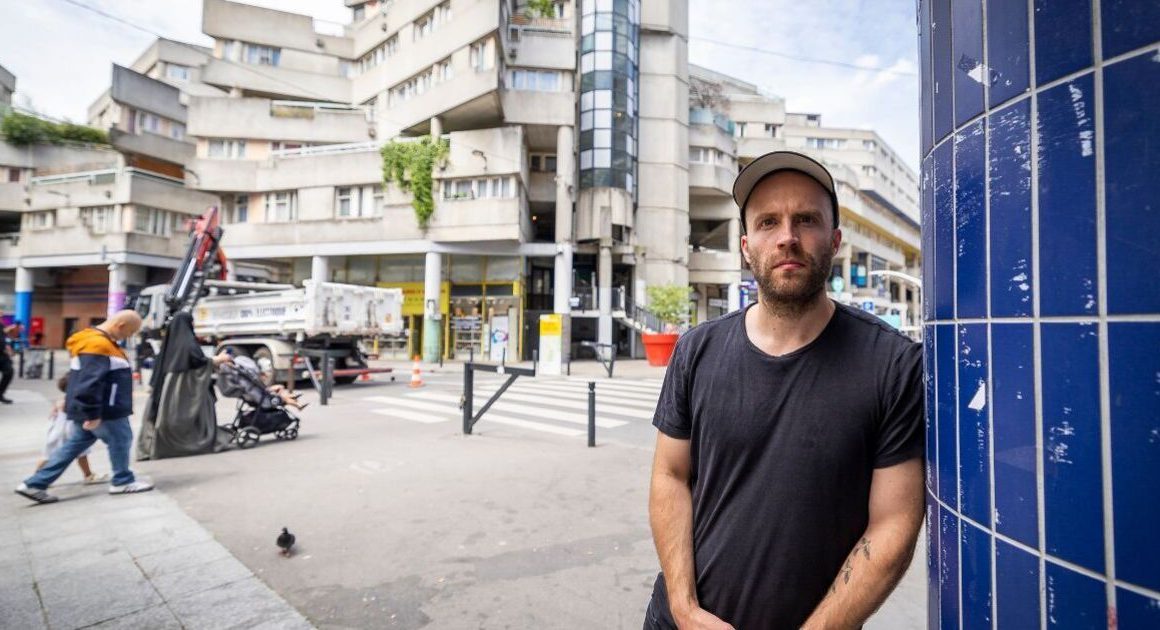A U.S. military mission to construct a floating pier off Gaza’s coast to deliver aid is underway, but concerns remain about logistics and whether it’s the best option to stave off famine in the war-torn Palestinian territory.
Maj. Gen. Patrick Ryder gave a timetable at a Pentagon briefing Tuesday, as four ships set sail from Virginia to the eastern Mediterranean to take part in construction.
He said the temporary pier is expected to be fully operational in approximately 60 days to help the delivery of up to two million meals daily.
Where will construction take place?
Ryder said the Pentagon doesn’t yet have information to provide on the location of the pier, adding that’s not something U.S. officials are going to release in advance.
Most of Gaza’s coast is beach, and there may be limited locations where larger ships can approach without dredging. There is a small fishing harbour in the north of the enclave, but it’s unsuitable for large ships.
There is also a long jetty built into the sea near Khan Younis in the south that is normally used for fishing boats.
How will it be built?
U.S. army Brig.-Gen Brad Hinson on Tuesday said the platform will be assembled with the help of smaller vessels that will move the pieces into place.
Col. Sam Miller, the 7th Transportation Brigade commander, said about 500 of his soldiers will participate in the mission, while Ryder said the construction will likely require as many as 1,000 U.S. military personnel to complete.
What will it look like once completed?
U.S. defence officials have said the finished project should be 12 metres long and made up of pieces of steel that are locked together to form a pier.
There will also be a causeway measuring some 550 metres long, also made from steel and attached to the shore.
How will it work?
The U.S. Department of Defence said the pier will have “a roll-on, roll-off capability that will allow ship-to-shore humanitarian assistance.”
Officials haven’t said who will be unloading the containers and taking the aid ashore. U.S. President Joe Biden has said there will be no U.S. troops on the ground in Gaza.
Ryder said large ships will be stationed offshore at the pier to offload food and supplies. Then smaller military vessels will transport that aid to a temporary causeway.
A ship carrying 200 tonnes of aid for Gaza has left Cyprus in a pilot project to open a sea route to deliver supplies. The U.S.-based charity World Central Kitchen says it is building a jetty from rubble to receive the ship in Gaza, which has no port.
What about security?
It’s not clear if Israeli or other forces would provide security for the temporary port itself or for aid moving into the enclave.
The issue of security has increasingly dogged aid distribution in Gaza, with some convoys being surrounded by desperate people who removed the supplies.
Retired rear admiral Mark Montgomery, a veteran of the U.S. navy with experience delivering humanitarian aid, told BBC News that security will need to be established both on the beach and in the shallow water nearby.
He said having civilians rush the shoreline looking for food would shut down operations.
A retired U.S. marine colonel, Mark Cancian, senior adviser for the Washington-based think-tank the Center for Strategic and International Studies, said it’s not been revealed who will collect the aid on shore. He told CBC News it’s possible Hamas could start attacking U.S. forces if it believes this is a U.S.-Israeli operation.
Will aid arrive fast enough?
Critics say a temporary port does not look like a sufficient solution for the people in Gaza who are already starving.
“There’s many good things about helping people avoid starvation, but this is not the way to do that efficiently, in a sustained way or quickly. It’s going to take a couple of months,” said Rami Khouri, a Palestinian American journalist and distinguished fellow at the American University of Beirut.
About 576,000 people in Gaza â a quarter of the population â are on the verge of famine, according to the UN and other agencies.
The pier is not a serious response to the crisis, but one “designed primarily to make Americans feel better about themselves,” Khouri told the non-profit news organization Democracy Now in an interview posted online Wednesday.
What are other concerns with the project?
Another problem, Khouri told CBC News, is there’s “no clear mechanism” yet for how the food, medicine and other essentials will be distributed.Â
“Who’s going to do the distribution? Will it be accessible to all the Palestinians in Gaza who need it, or only to some people? Will the Israelis continue their policy of trying to vacate north Gaza and only make it available to people in the south?”

Khouri said there are a number of distribution mechanisms that are critical for making the project helpful, useful and ethical.
“We can’t judge it fully until we know how the aid is going to be distributed and who is going to do that.”
He said the question also remains whether Israel will end up in charge of securing the port, giving it a “permanent control mechanism.”
Israel declared war after Hamas-led militants stormed across the border last Oct. 7, killing some 1,200 people and taking about 250 hostages, according to Israeli tallies. Since then, Israel’s air and ground assault on Gaza has killed more than 31,000 people and wounded over 72,000, according to Gaza health authorities.
Are there better options?
The UN’s World Food Program used a new land route on Tuesday to deliver food to northern Gaza for the first time in three weeks as global pressure grows on Israel to allow more access to the territory amid a looming famine. The six trucks used the 96th crossing, close to Kibbutz Be’eri, after the cargo was checked at Israel’s Kerem Shalom crossing, the Israeli military said.
Enough food for 25,000 people was delivered to Gaza City in the early hours of Tuesday, said WFP spokesperson Shaza Moghraby. It was WFP’s first delivery to the north since Feb. 20 and, Moghraby said, “proves that moving food by road is possible.”
Aid groups say Israel’s near-total blockade of Gaza and the fighting have made it nearly impossible to deliver aid in most of the territory.
A shipment of humanitarian aid from Morocco began entering the besieged enclave by land on Tuesday, the first time the Kerem Shalom border crossing from Israel has been used for aid in five months of warfare, according to a Moroccan diplomatic source.
What does each side say about the plan?
Israel says it “fully supports” the temporary pier and promised “full co-operation between the two parties.”
Hamas has not responded to requests for comment.
Sigrid Kaag, the UN humanitarian and reconstruction co-ordinator for Gaza, said aid arriving by sea “is not a substitute” for that arriving by land.
The biggest UN agency operating in Gaza, UNRWA, said it welcomes any effort to “improve and increase the flow of much-needed humanitarian assistance.”
However, spokesperson Juliette Touma added, “there’s an easier, more efficient way of bringing in assistances and that is via the road crossings that connect Israel with Gaza.”











